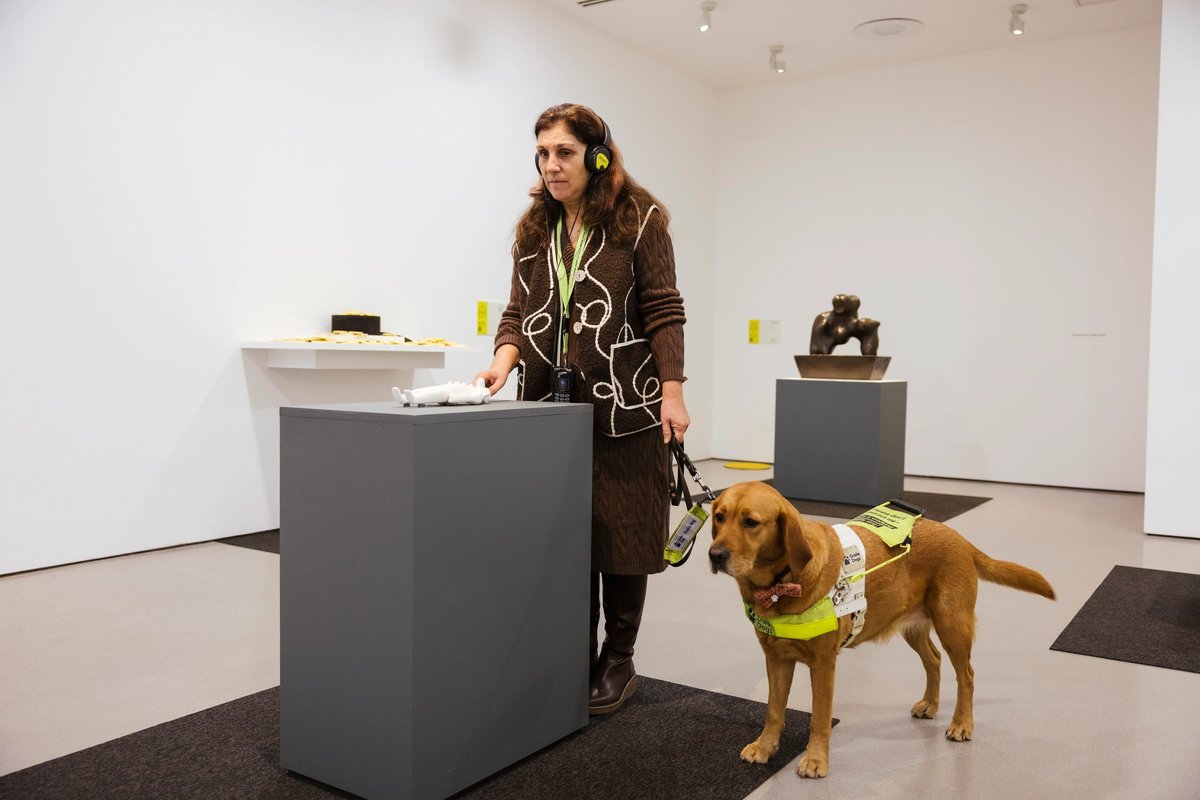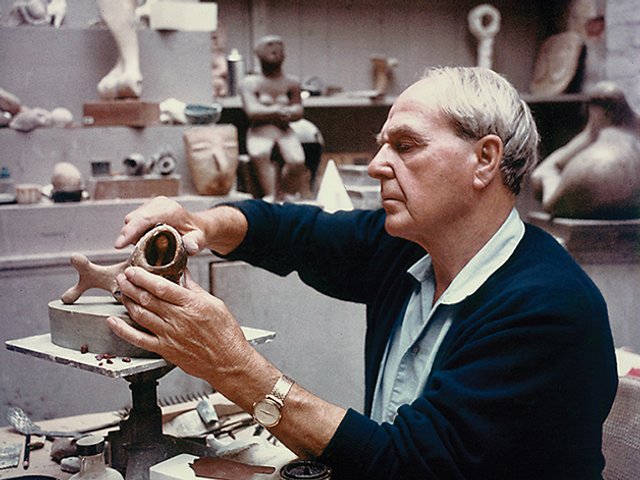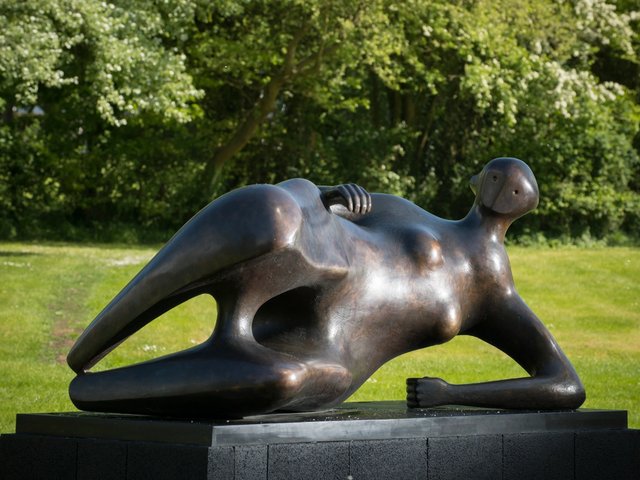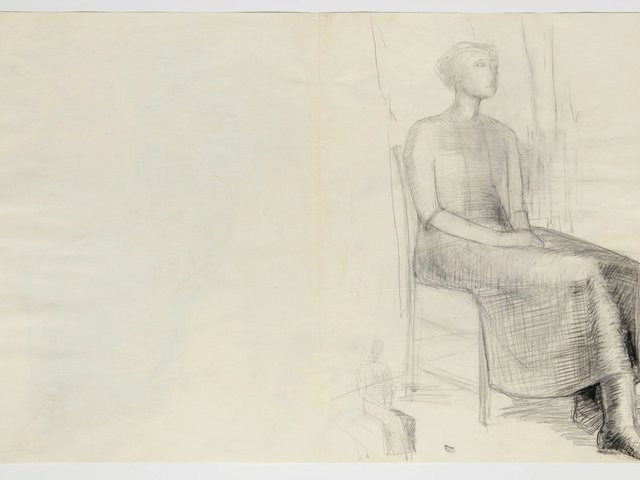Henry Moore believed tactility to be paramount, “as an aesthetic dimension”, to both the making and the experiencing of sculpture. He really wanted us to be able to touch his work. However, its value and importance now means that doing so in most museums would be considered a big no-no—and for anyone for whom touch provides sight, this is massively restricting.
The Henry Moore Institute's new show, Beyond the Visual—the first major UK exhibition of sculpture to centre blind and partially blind artists and curators—unpacks the value of the haptic and how perception involves all the senses. It includes Moore's Mother and Child: Arch from 1959 and Barry Flanagan's Elephant, from 1981. Both artists were connected to Tate’s landmark 1981 exhibition, Sculpture for the Blind.
But, as Ken Wilder, a professor of aesthetics and the co-curator of the institute’s exhibition says, this new show turns that very notion on its head. “The idea of sculpture for the blind is a bit odd because it suggests a special type of sculpture that somehow for the blind and all other sculpture is not,” he explains.
Instead, Wilder and co-curators Aaron McPeake, an artist and associate lecturer at Chelsea College of Arts who is registered blind, and research curator at the institute Clare O'Dowd, have sought to provide visitors with “a vocabulary of touch”. The trio describe this as a set of propositions that encourage visitors to pay attention.
For O'Dowd, the experience has changed the way she experiences all exhibitions. “I'll never be the same again,” she says. For the institution, the process has been “the steepest learning curve ever”.
Initial consultation workshops at Tate Modern and the institute put the lived experience of people with different visual acuities front and centre, with their input shaping everything from marketing to project management. Emails were sent in larger font sizes, and posters around the institute’s home city of Leeds advertise the show through sensor-triggered sound.
The exhibition’s layout was also a key consideration. Plentiful seating was added because exploring works through touch and audio takes time, and gallery staff and wall text panels are all clad in bright yellow because high contrast is crucial for partially blind visitors. Textured flooring mats signal when works are in reach. And all the objects are there to be handled.
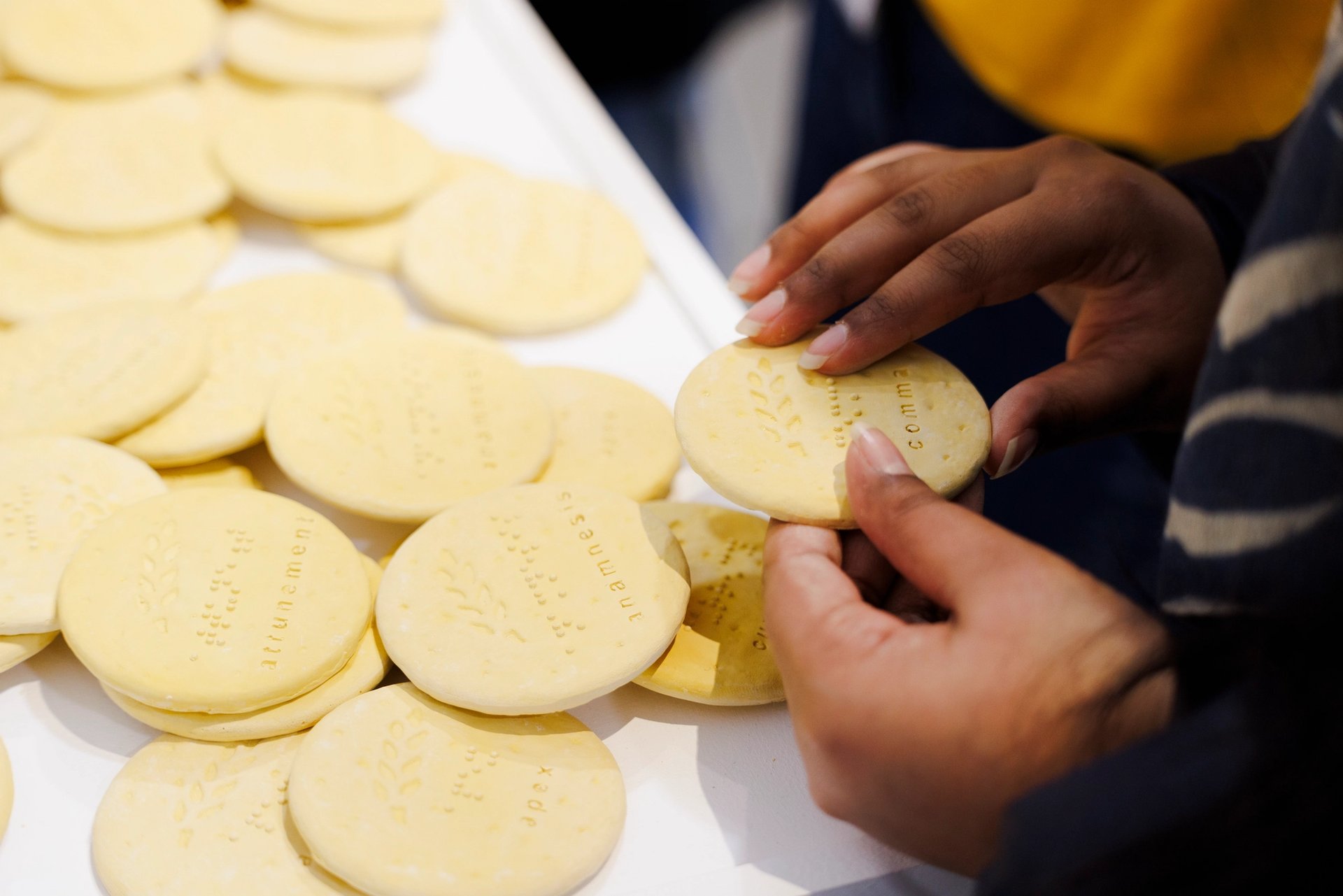
British sculptor David Johnson's work, Nuggets of Embodiment, comprises 10,000 stone-plaster Digestive biscuits featuring words in Braille
Joanne Crawford
This includes works by 16 international artists, from British sculptor Lenka Clayton to New Orleans-born Emilie Louise Gossiaux. Most are sculptural, but some, especially Aaron McPeak's sonorous bell metal pieces Rings (2025) and Icelandic Landscapes (2007-2024), use sound and movement.
Of particular note are Collin van Uchelen's Project Fire Flower, which translates the artist's own firework displays, designed from audio descriptions, into illuminated tactile panels. So too, Jennifer Justice's Bucket of Rain (2021)—a drizzle of lengths of dog-tag metal chain, attached to the rim of a rusty bucket, at the end of which hang beautifully tactile drop-shaped wooden pieces.
British sculptor David Johnson has contributed two of the show's new commissions. Nuggets of Embodiment comprises 10,000 stone-plaster Digestive biscuits, with words like “comma” and “attunement” in Braille appearing in place of the much-loved snack’s brand name.
Visitors to the show will see indicators of blindness—Braille text, more guide dogs than most galleries welcome—but more importantly, the exhibition, to Johnson's mind, is “of blindness”. “And it's of being human,” he continues.
“That's the most important thing. If the show can leave that sort of message, it's done its job.”
- Beyond the Visual, Henry Moore Institute, Leeds, until 19 April 2026


